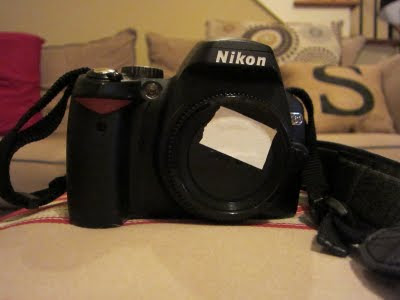This story begins with the convenient appropriation of a rather large bunch of fresh basil (one of the major perks of working at a plant nursery).
What better to do with a bunch of basil than whip up some classy pesto? I actually bought an ice cube tray last week specifically in the hopes that I would have a batch of pesto to freeze in 'em! (I'm a nerd, yes I am). I washed the basil as soon as I got home and put the bunch in a glass with water to keep it fresh while I ran to the grocery store for the fixin's for my newest creation.

Springtime Sausage Pasta
______________
(Yield: 1 Serving)
Ingredients
One sweet italian sausage
1/2 cup sliced bell pepper (I used half red and half yellow)
2 oz fettucini pasta (I used enriched vegetable pasta)
1 1/2 tablespoons Classy Pesto (recipe below)
1 1/2 teaspoons grated parmesan cheese
1/2 teaspoon flour
1/2 cup milk
1 teaspoon extra virgin olive oil
1 tablespoon pine nuts
Instructions
Bring pasta water to boil and cook pasta according to box directions.
In a medium saute pan, heat oil over medium high heat. Remove sausage from casing and brown- breaking up into bite-sized pieces- about 4 minutes. Add bell pepper to pan and cook with sausage until tender and slightly translucent- about 3 minutes.
Once sausage and peppers are cooked, remove from pan and hold in a bowl to the side. Returning pan to medium heat, add flour and stir constantly until all the juices in the pan are absorbed and the four is a medium brown color (we're creating a rue here, in case you're wondering). Add milk to the pan, whisking vigorously to prevent lumps form forming. Bring to a simmer and cook until bubbling and thickened.
Add pesto and parmesan cheese to the milk/flour mixture and stir to combine. Return sausage and peppers to the pan and toss with cooked pasta.
Garnish with pine nuts.
Classy Pesto
______________
(Yield: about 3/4 cup)
Ingredients
One huge bunch fresh basil (about 3 cups of leaves)
3 cloves garlic
3 tablespoons pine nuts
1/4 teaspoon salt
1/2 cup extra virgin olive oil
Instructions
Place basil, garlic, pine nuts and salt in the bowl of a food processor. Pulse a few times. Turn food processor on and pour in olive oil through the pour spout of processor in a slow stream. Voila- I mean- Presto!!

As mentioned above, I spooned my pesto into an ice cube tray to freeze. Once the pesto is frozen, I'll put all of the cubes in a ziplock bag and back into the freezer- at the ready for endless culinary possibilities!
I'd like to mention as a footnote that you should be very mindful, once you have removed your basil bunch from it's fresh-keeping glass of water, to not mistake said glass of water as one intended for human consumption. Not that I know from experience...











